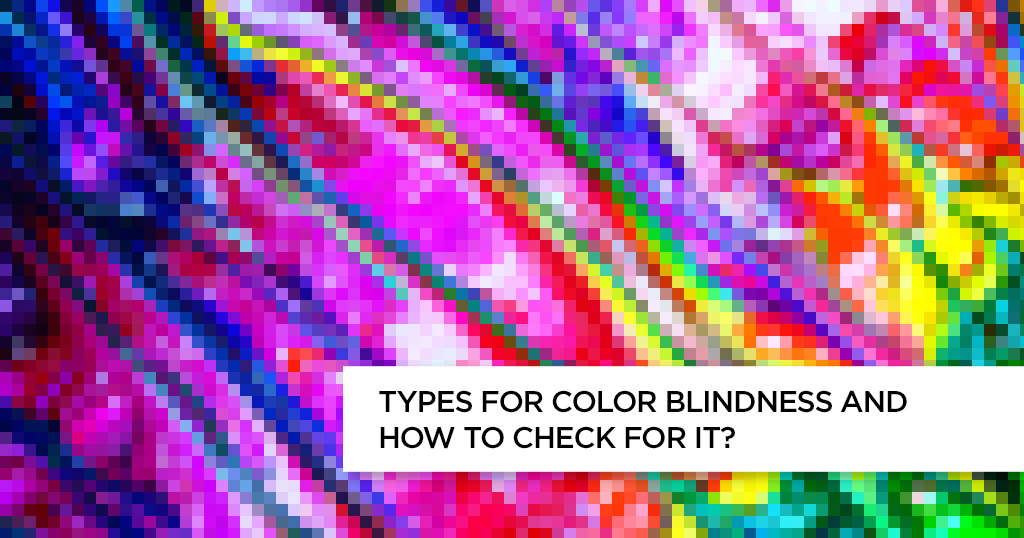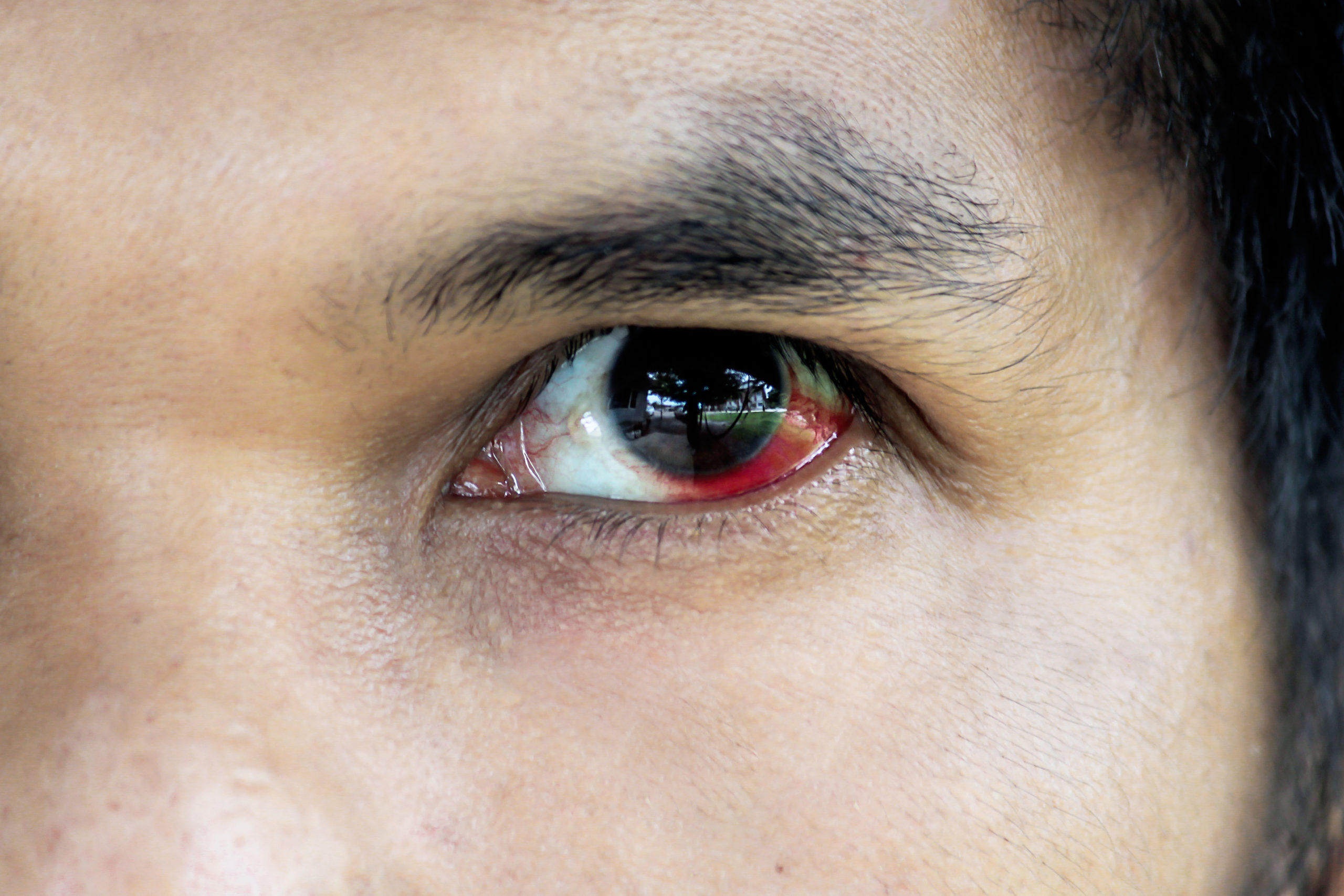Types of color blindness and how to check for it?


Worldwide, there are approximately 300 million people with color blindness. The term, in itself, however, is misleading. A majority of people with color blindness are not truly blind. Their vision is perfectly fine. They are only not able to distinguish between colors.
Moreover, the inability to distinguish colors is related to specific colors (certain shades of the same color). They are not completely color blind. This article will have an in-depth look at color blindness and various other parameters related to the disease.
What is Color Blindness?
According to the American Academy of Ophthalmology, color blindness is defined as when a person cannot see colors normally. Color blindness is also called ‘color deficiency’, and is rightly so, as individuals aren’t fully able to recognize colors. Depending upon the condition and severity, only certain colors (shades) aren’t recognized by individuals with color blindness.
However, certain individuals can be, in the true sense, completely color blind. Such cases are extremely rare, where individuals aren’t able to recognize any color. This condition leads them to see the world only in black, grey, and white color tones. This condition is termed as achromatopsia. Compared to color blindness (color vision deficiency), affecting one in 12 men and one in 200 women, achromatopsia is extremely rare and affects one in 30, 000 people.
What Are The Different Types of Color Blindness?
There are three types of cones (L, M, and S) in our retina. These cones react to various wavelengths of light of different colors, impacting how we see. The L cones react to red color, M reacts to green, and S reacts to blue.
Based on how many types of cones in our retina are affected, color blindness can be broadly classified into three types – Monochromacy, Dichromacy, and Anomalous Trichromacy.
Monochromacy
Monochromacy is when none or only one of the three types of cones exists or functions appropriately. Monochromacy can be further divided into two types, Cone monochromacy, and Rod monochromacy.
Cone Monochromacy: This is when only one of type of cone is working properly. It becomes very challenging to differentiate between different colors.
Rod Monochromacy: It is also sometimes referred to as achromatopsia. Rod monochromacy is when none of the cones are functioning appropriately and the person relies on rods only for vision. This means that such people cannot see any color, and the world becomes black and white .
Dichromacy
Dichromacy is a state where any one out of three cones either does not exist or cannot pick up wavelengths. Depending on the cone having the issues, dichromacy is of three types.
Protanopia: Deficiency in L cone resulting in an inability to detect red color.
Deuteranopia: Deficiency in M cone impacting the vision to see that green color.
Tritanopia: Deficiency in S cone harming the blue color vision.
Anomalous Trichromacy
All the cones in anomalous trichromacy exist, but they are not appropriately aligned to detect their respective color wavelengths. Similar to dichromacy, anomalous trichromacy is of three types, protanomaly, deuteranomaly, and tritanomaly.
Protanomaly: L cones are not aligned, making our eyes less sensitive to red color.
Deuteranomaly: Sensitivity to green color is less due to the non-alignment of M cones.
Tritanomaly: The S cones are not aligned, causing blue color insensitivity.
Request an appointment at Apollo Hospitals
Call 1860-500-1066 to book an appointment
What Causes Color Blindness?
Color blindness is usually caused by a genetic condition (hereditary). The X chromosome usually carries the gene responsible for color blindness. Hence, we see that men are more affected by women with color blindness.
Other than genetic factors, color blindness can also be caused by:
Parkinson’s disease: The light-sensitive nerve cells are damaged in Parkinson’s disease, leading them not to function efficiently and causing color blindness.
Kallman’s syndrome: Kallman’s syndrome results in the failure of the pituitary gland, and color blindness can result as one of the symptoms .
Medications: Certain medications can lead to varying levels of color blindness, depending upon the individual. For instance, tiagabine, an anti-seizure drug, has caused reduced color vision in about forty-one percent of individuals consuming the drug. Thankfully, the effects are not found to be permanent.
Cataracts: Cataracts can lead to washing out of color vision, making colors appear less bright than they are, inducing a form of color blindness. However, with cataract surgery, the natural brightness perception can be restored.
What Are The Symptoms of Color Blindness?
Color blindness is usually detected in kids at an early stage while teaching colors. Monochromacy is the most easily detectable type as it causes the world to turn colorless for us. However, since other color blindness types do not cause any major lifestyle change, it can often go unnoticed until a certain age.
Some of the most common symptoms of color blindness are:
- Difficulty distinguishing colors (commonly between red and green)
- Inability to interpret shades of same or similar colors
When to See a Doctor For Color Blindness?
If you face any challenges in distinguishing between different colors or shades of color, it’s time to visit a doctor or an ophthalmologist. You can book an appointment with Apollo Hospitals to consult with an ophthalmologist.
Request an appointment at Apollo Hospitals
Call 1860-500-1066 to book an appointment
What Are Different Color Blindness Tests?
Your doctor will perform a few tests based on the symptoms that you describe to diagnose the type of color blindness. For most of these tests, doctors will ask you to differentiate colors or shades of colors on a screen. Some of the tests include:
Farnworth-Munsell 100 Hue Test: This test checks your ability to distinguish between different shades of a color by lining them alongside each other.
Cambridge Color Test: Your doctor will ask you to identify a C that is different in color from its background.
Ishihara Color Test: This test checks for red-green color blindness. Your doctor will ask you to identify numbers and shapes in a dotted background.
What Is The Treatment For Color Blindness?
As mentioned earlier, there is no treatment for color blindness. However, it is possible to reduce its impact through various means, especially if it is not genetic. There are a few lenses and glasses available that can help minimize the effect of color blindness.
Another treatment through gene therapy is being studied in animals and may prove vital in paving the way for developing similar treatment procedures for humans.
Until any specific treatment is found, a few lifestyle changes can help us lead a normal life. These lifestyle changes can reduce the impact of color blindness. For instance, one of the biggest challenges that we can face due to color blindness is identifying signal lights while driving. To overcome this challenge, we can memorize the order of traffic signal lights, top red, middle amber, and bottom green, and then interpret the color based on brightness.
Another example is to use applications that can assist in identifying color while performing any household chores. There are various software applications for mobile devices that can use our phone camera and identify any color. These apps can do both, read out the color names to us, simulate and identify different colors on-screen.
Summing it up
There’s nothing to majorly worry about, if you or your loved ones suffer from color blindness. It is not fatal or even a significant health issue. Patients suffering from it can lead a normal life just like any other individual. You would not face any major issues in carrying out day to day activities. However, you will require assistance for certain tasks, such as distinguishing between red and green traffic signals. But gradually, with practice , the need for assistance is eliminated.
Glasses and gene therapy are already showing promise in playing a vital role in assisting in the treatment of color blindness. For any assistance or support regarding color blindness or its treatment, you can visit Apollo Hospitals.
Request an appointment at Apollo Hospitals
Call 1860-500-1066 to book an appointment
© Copyright 2024. Apollo Hospitals Group. All Rights Reserved.
 +91 8069991061
Book Health Check-up
Book Health Check-up
Book Appointment
Book Appointment
+91 8069991061
Book Health Check-up
Book Health Check-up
Book Appointment
Book Appointment







